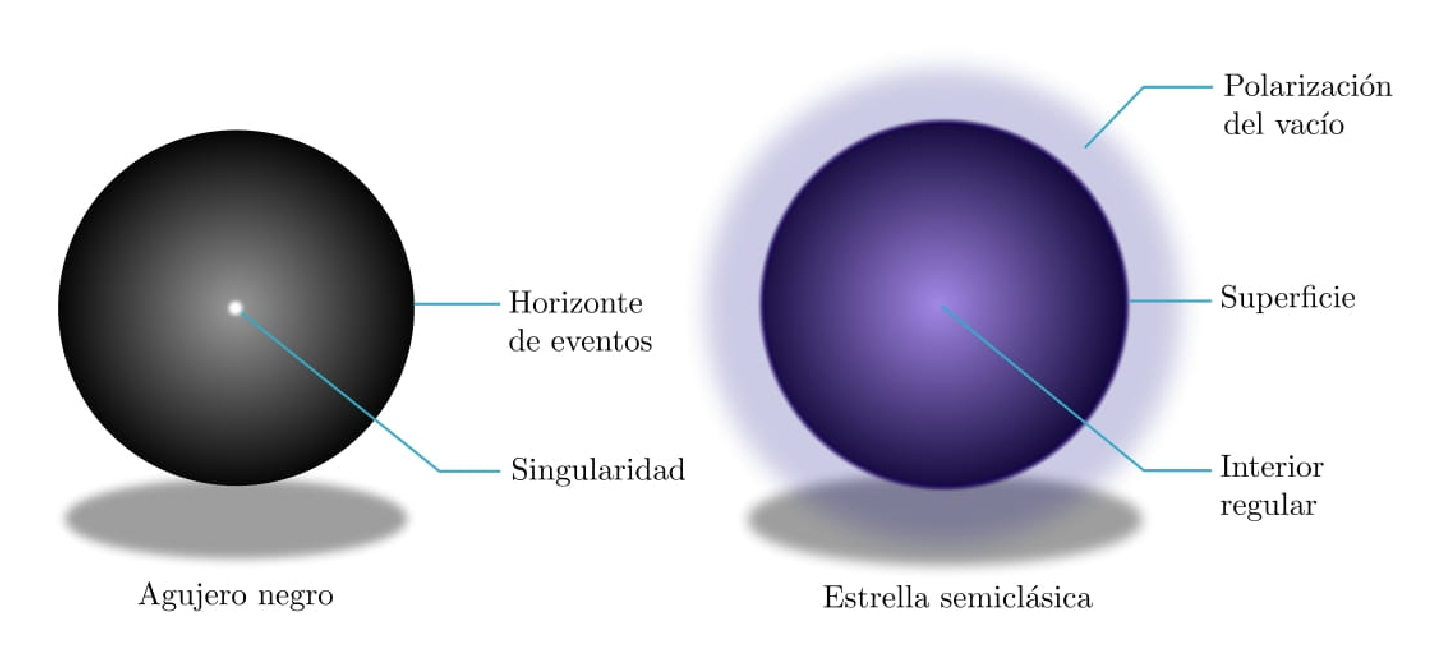Study points to the existence of stars as compact as black holes
The Institute of Astrophysics of Andalusia (IAA-CSIC) is leading a theoretical study that shows that some of the objects classified as black holes could actually be ultra-compact stars
Although stars and black holes are a priori clearly distinct objects, a strange question emerges from a recently published theoretical study: Are we confusing a very compact type of stars with black holes? The key lies in a factor, vacuum polarisation, which allows much more compact stars to exist than previously thought, with densities similar to those of black holes. The study is published in the latest issue of the journal Scientific Reports.
Stars can range from medium densities, such as that of our Sun, to the very high densities of white dwarf stars, which can contain Sun-like masses in volumes equivalent to that of the Earth. While in the case of a star like the Sun it is the balance between gravity, which tends to sink the star, and thermal pressure, which tends to expand it, that keeps the structure stable, in the case of white dwarfs another mechanism, the degeneracy of electrons, is at work. But the maximum limit, according to our current knowledge, would be found in neutron stars, which can contain two solar masses in a diameter of 24 kilometres and whose stability is due to neutron degeneracy.
"General relativity predicts the existence of a limit to how compact a star can be, known as the Buchdahl limit. Thus, any object that exceeds this limit must be a black hole, because for such compact objects there is no known material structure that can support its own gravity", says Julio Arrechea, a researcher at the Institute of Astrophysics of Andalusia (IAA-CSIC) who leads the work. Stellar black holes are produced precisely by the collapse of the core of a very high-mass star. They are the most compact objects known, with enormous amounts of matter contained in a very small diameter and, in fact, their gravitational force is so intense that not even light can escape from them.
"In our study we have worked with a factor that affects the compactness limit of stars: standard general relativity does not take into account a well-known phenomenon in electromagnetism, the vacuum polarisation, which has an associated energy density and which, according to the central idea of general relativity, should also be a source of gravity", says Carlos Barceló, a researcher at the IAA-CSIC who is participating in the study.

The vacuum polarisation behaves as if there were an additional cloud of matter, which they call semi-classical matter, in addition to the conventional, or classical matter. This semi-classical matter cloud has very peculiar properties that classical matter cannot reproduce, and can even harbour negative energies in certain situations. While vacuum polarisation is a negligible phenomenon in stars that are not very compact like the Sun, it is relevant in situations close to the Buchdahl limit.
In the recently published paper, which analyses the structure of stars consisting of classical and semi-classical matter, the team finds, due to the peculiarities of semi-classical matter, relativistic stars that are more compact than the Buchdahl limit.
"Such semi-classical stars could be perfectly mistaken for black holes, as they can be almost as compact as them. This begs the question whether the objects we call black holes in astrophysical practice are really black holes and not ultra-compact semi-classical stars. New observational capabilities promise an exciting decade to discern the true nature of these objects", concludes Julio Arrechea (IAA-CSIC).
Instituto de Astrofísica de Andalucía (IAA-CSIC)
Unidad de Divulgación y Comunicación
Silbia López de Lacalle - sll[arroba]iaa.es - 958230676
https://www.iaa.csic.es
https://divulgacion.iaa.csic.es

